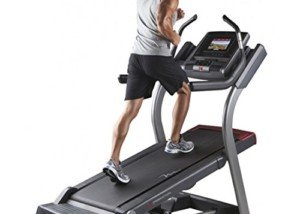How Tall Women Can Get Confidence from Short Envious Women

Very tall women can get confidence from short women.
This article is for very tall women who are unhappy or self-conscious about their height. (more…)
Anti-Cancer Diet for Dog with Cancer

Don’t make the mistake of feeding your sick dog “normal dog food,” only to brutally regret not feeding him an anti-cancer diet after he’s gone. (more…)
Which Large Dog Breed Sheds the Most?

Beware of the dog breed that sheds the most, year-round.
My parents have this type of dog, and there isn’t a place in the house that’s free of this dog’s white “hairs.” (more…)
The Best Cardio Machines for Burning Fat
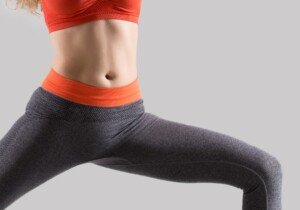
If you want very effective cardio workouts for burning fat that involve using machines, you’re in luck.
Does this describe you:
Can’t get rid of ugly cellulite no matter what you do?
Have trouble pulling up your favorite pants because your “huge” thighs get in the way?
Or maybe you can easily slip pants on, but then when it’s time to zip them, a big stomach gets in the way.
When you look in the mirror, what do you see? A sleek, lean and tight body, or a big, lumpy body?
Don’t give up hope when it comes to finding the right workouts for burning fat.
Workouts for burning fat can be very effective on cardio equipment.
If you’re wondering, “Well, which kinds of cardio equipment provide the best workouts for burning fat?” the answer is whichever cardio machine you like using the most.
- Treadmill
- Stationary Bike
- Elliptical
- Stair stepper
The most effective workouts for burning fat involve generating a hormonal reaction in your body.
Have you been doing cardio (machines or elsewhere) for what seems like forever, and you’ve lost only a few pounds, or you still look like a cow?
What have you been doing wrong with your exercise?
I’ll tell you: You’ve been doing what’s known as steady state aerobics.
Steady state cardio has its place, but this place definitely is not in the arena of great workouts for burning fat!
If you normally do three cardio sessions a week, it’s perfectly okay if one – just one – is steady state.
But for incredible workouts for burning fat, it’s essential to do two (2) “hormonal” cardio sessions per week.
This is the only way you’re ever going to eradicate that blubber on your stomach, thighs, butt, or wherever your hot spots are.
 Lorra Garrick is a former personal trainer certified through the American Council on Exercise. At Bally Total Fitness she trained women and men of all ages for fat loss, muscle building, fitness and improved health.
Lorra Garrick is a former personal trainer certified through the American Council on Exercise. At Bally Total Fitness she trained women and men of all ages for fat loss, muscle building, fitness and improved health.
.
Top image: Freepik.com, yanalya
Will Fast Walking Every Day Help the Obese Lose Weight?

If you’re obese you might be wondering if fast walking every day will help with weight loss.
If you’re obese, then you need to know that a certain kind of fast walking will be very effective at helping you lose weight.
This kind of walking is not the kind that you do on the job inside a building, so forget that right off the bat.
Because if that kind of walking were effective for weight loss, you most likely would not be obese.
The walking that an obese individual does in a week, from shopping trips and errands, even if fast, also doesn’t count, because, again, if that kind of walking were great for weight loss, you’d know it after all this time.
The problem with shopping trips and on-the-job walking is that it’s often not predictable how much you’ll be doing, and there may not even be that much done every day.
Furthermore, distractions will always get in the way. Plus, if you wear dressy shoes to work, then for sure, the workplace should not be your location for fast walking for weight loss.
It’s okay to move fast to make a meeting, but fast walking for losing weight is a whole different animal.
Thus, the obese person’s best plan for weight loss should be one’s fastest walking — I mean your absolute fastest — that you can sustain for 30 to 60 seconds — every day.
Then go easily for 2-3 minutes, maybe four minutes, depending on how you feel. After this recovery phase, go fast again.
When I say go “fast” or your “fastest,” this does not mean a particular speed.
It means the fastest that YOU can walk. Thus, speed or how long it takes you to get from one spot to the next does not matter.
It’s about moving your body as quickly as possible for 30-60 seconds. If all you can do is lumber at what seems like a lethargic pace, then that’s the level you will be working at for your work phases.
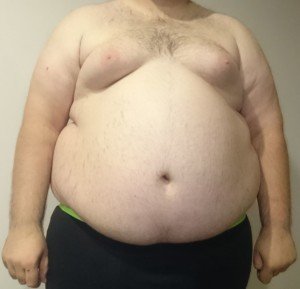
If you must move extremely slowly for the recovery phase, then so be it, but what’s important is doing this every day.
Remember, this is NOT about miles per hour or how much distance you can cover in 30 seconds.
It’s about moving as quickly as you can for 30-60 seconds, then moving at a recovery pace for several minutes, then moving your best again.
Alternate for 20 minutes this way. Then you’re done. For best weight loss results, an obese person should do this every day.
Out of 20 minutes, you will have exerted yourself for a total of perhaps five minutes, if you do one-minute work phases with three-minute recovery phases. This is an example.
You may not be able to go your absolute fastest for 60 seconds; maybe for only 30 seconds.
But there may be times when you can’t move your fastest, but you can still walk pretty good, and thus you can sustain a challenging pace for 45 or 60 seconds.
The obese person should commit to this fast walking interval program every day.
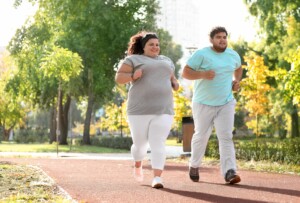
Shutterstock/New Africa
Walking this way will be far more effective than a sustained pace at a slow, comfortable speed.
If you are so obese that just 10 minutes of slow, sustained walking are all you can take, then that’s your starting point.
Do that every day, even twice a day. At some point you’ll be able to go for 15 minutes.
You’ll also notice that you need to go faster in order to get the same challenge. This means your fitness is improving.
But ultimately, interval training with fast walking alternating with easy paced movement, is the best way for obese people to lose weight.
As the obese person’s fitness improves, he or she can extend the time spent doing interval walking to up to 45 minutes.
 Lorra Garrick is a former personal trainer certified through the American Council on Exercise. At Bally Total Fitness she trained women and men of all ages for fat loss, muscle building, fitness and improved health.
Lorra Garrick is a former personal trainer certified through the American Council on Exercise. At Bally Total Fitness she trained women and men of all ages for fat loss, muscle building, fitness and improved health.
Coronary Artery Calcium Score Predicts Heart Attacks

Heart attacks can be predicted with the so-called calcium score, which is based upon the amount of this mineral in your coronary arteries.
The calcium score is used to predict heart attacks when taken into consideration with other standard risk factors for heart attacks.
This all improves the ability to predict heart attacks. The information comes from research that’s reported in JAMA (April 2010). A CAT scan (“CT” scan) is the tool used to determine the coronary artery calcium score.
The imaging device measures calcium buildup in the plaque that’s on the arterial walls inside the heart.
This is associated with risk of future heart attacks. But to what extent does adding the coronary artery calcium score, when added to traditional risk factors for heart disease, improve classification of risk?
This is not clear, according to the JAMA report. The research involved 6,814 subjects who did not have known cardiovascular disease.
The authors of this study stated that when the coronary artery calcium score is added to the traditional risk factors for heart attacks, the result is a substantial improvement in the classification of risk for predicting heart disease events in women and men who present with no symptoms.
So why, then, isn’t the CAT scan for calcium score a standard screening procedure for possible future heart attacks?
A CAT scan runs between $200 and $600, and it would be quite costly to implement this as a screening procedure for the general or average-risk population.
Secondly, CAT scans pose radiation exposure. Just one exam, taken at age 40, is estimated to produce 28 cancers per 100,000 women, and nine cancers per 100,000 men.
This may seem negligible, but these numbers are actually statistically significant. The calcium score cannot be determined with an MRI.
The study authors report that the coronary artery calcium score is a promising assessment tool for possible future cardiac events, but it remains unclear whether or not this tool’s benefits outweigh the risks for the general population.
In the meantime, if you’re concerned about heart attacks, a good start would be to request from your doctor a C-reactive protein blood test, and an LPA blood test, in addition to a cholesterol test.
Plus, avoid trans fats, lose excess weight, especially if it’s concentrated in your belly, and stick to a structured exercise regimen.

Shutterstock/Oscar Carrascosa Martinez
Another risk factor for heart attacks is getting emotionally “worked up” on a frequent basis; learn stress management.
 Lorra Garrick has been covering medical, fitness and cybersecurity topics for many years, having written thousands of articles for print magazines and websites, including as a ghostwriter. She’s also a former ACE-certified personal trainer.
Lorra Garrick has been covering medical, fitness and cybersecurity topics for many years, having written thousands of articles for print magazines and websites, including as a ghostwriter. She’s also a former ACE-certified personal trainer.
.
Top image: Shutterstock/ESB Professional
Source: sciencedaily.com/releases/2010/04/100427171708.htm
Should an Elderly Person Do Chair Exercise or Standing Exercise?

Elderly people need to be stronger on their feet; seated exercises won’t cut it; most of their exercise should be done standing.
Elderly people who are still walking without assistance should be doing mostly standing exercises, rather than group classes where the exercises are done while seated.
This isn’t about performing a barbell press overhead while seated, or curling dumbbells while seated.
It’s about the so-called chair exercises that are commonly done by older people in a group instruction setting.
Many of the participants walk into these classes without a walker or cane.

Such able-bodied senior adults do not live their lives out of a motorized scooter. It makes little sense, then, that they’d be doing exercises out of a chair.
“Standing exercise improves core strength, balance and coordination,” says Monica Charlton, a senior exercise specialist and certified Silver Sneakers/personal trainer out of New Orleans.
“Standing exercise is preferable to sitting exercise because it is weight-bearing, which is the only type of exercise that can help strengthen bone density.
“Seated exercises carry a lower risk of falling, but also do less to prevent falls in the long run.”
As a former personal trainer and one who has rehabbed my elderly mother from a hip fracture, I strongly recommend an emphasis on standing exercises for seniors.
What about seated resistance machines and dumbbell exercises from a chair?
These include the leg press, leg extension, lat pull-down, any rowing-type equipment, overhead press equipment and chest press equipment, plus pushing dumbbells overhead or lifting them to the side.
All senior age men and women should use resistance machines, as they stabilize the body during strength training and isolate muscle groups.
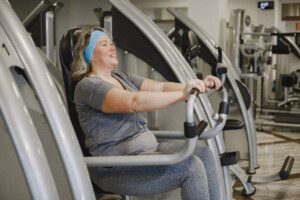
Pexels, Gustavo Fring
Working with free weights or tension bands while seated is also very beneficial.
But there is no real benefit to doing “exercises from a chair” if you have the mobility to walk around your house, let alone a store or mall.
Even for older people who tire quickly after walking a short distance, doing exercises from a chair would be an inferior approach to improving their mobility, stamina and neuromuscular coordination.
You’re far more likely to fall (either from a slip or a knee giving way) while standing or walking, rather than topple out of a chair!
Thus, your exercise program should include many moves while standing or walking:
- Stationary or walking lunge (with or without holding a weight)
- Sideways and backwards stationary lunge
- Body weight or light dumbbell squat
- Step-ups
- Sustained staircase climbs (with short breaks as needed)
- Aerobics and group fitness classes. Never mind that all the younger participants have two risers under their stepper. You can use just the stepper alone and enjoy the class!
Exercising from a chair eliminates any chance to improve core strength, stability and balance while on your feet — which you will sooner or later be on when the “from a chair” exercise session is over.
The “from a chair” approach is a downgrade from an older person’s baseline — assuming they do not have difficulty with actual mobility — though they may tire quickly from walking due to heart disease or excess weight.
- Chair exercises will only improve one’s ability to do those particular exercises while seated in the chair.
- They will do nothing to ignite improvement in doing things while standing or walking.
According to cdc.gov, one out of three people over 65 will fall in a given 12 month period—and these are falls while they are on their feet.
Exercise while seated in a chair will NOT increase stability on one’s feet.
 Monica Charlton’s personal training services include fitness/body composition assessments, nutrition planning, running programs and customized programs for clients with disabilities or injuries, as well as older and mainstream clients.
Monica Charlton’s personal training services include fitness/body composition assessments, nutrition planning, running programs and customized programs for clients with disabilities or injuries, as well as older and mainstream clients.
 Lorra Garrick is a former personal trainer certified through the American Council on Exercise. At Bally Total Fitness she trained women and men of all ages for fat loss, muscle building, fitness and improved health.
Lorra Garrick is a former personal trainer certified through the American Council on Exercise. At Bally Total Fitness she trained women and men of all ages for fat loss, muscle building, fitness and improved health.
.
Top image: Shutterstock/Boryana Manzurova
How a Woman Can Learn to Punch Good with a Treadmill

You’d be surprised how well a woman can learn to punch while walking on a treadmill; women can improve their punch without boxing classes. (more…)
Why Obese Women Should Avoid Light Weight Workouts

Obese or very heavy-set women should not rely on light weight strength training to lose fat, but instead take a different approach: one that they’d never consider. (more…)
Is Old Age a Good Excuse for a Fat Belly?

A high BMI is strongly correlated to certain medical conditions, even if you’re elderly or of “old age.”
A fat belly does not care how old you are, and elderly people with a high body mass index certainly do not get a free pass to good health just because of their age. (more…)

























